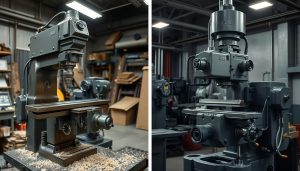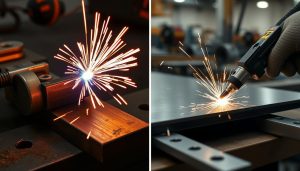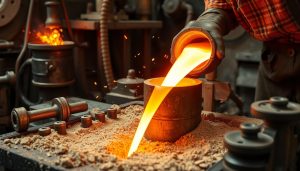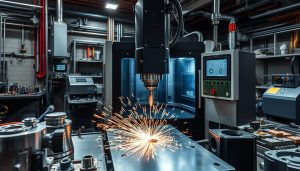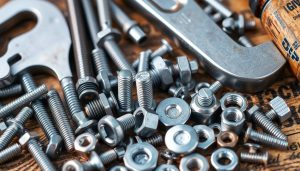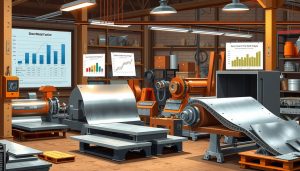In today’s world, precision is key to success. Industries like aerospace and automotive need parts that are very detailed. CNC turning tools are crucial for making these parts with high accuracy.
But what are CNC turning tools, and why are they important? This article will explore their types, characteristics, and how to choose the right ones. By the end, you’ll know how these tools are changing manufacturing.
Many wonder: How do CNC turning tools help manufacturers achieve precision and innovation? The answer is in choosing and using these tools wisely, as we’ll see.
What Are CNC Turning Tools?
CNC machining has changed the game in metal cutting and shaping. At its core are the CNC turning tools. These tools are key to turning operations, making metal parts with great accuracy and speed.
Overview of Their Role in Turning Operations
CNC turning tools, like tool holders and cutting inserts, work together. They control the removal of material from a workpiece. This teamwork is vital for making parts with the right size, finish, and quality.
Key Characteristics for Effective Cutting
- Material composition: Cutting inserts are made from hard materials like tungsten carbide, ceramic, or diamond. This makes them last longer in CNC machining.
- Geometric design: The shape of the inserts is designed to improve chip formation, heat dissipation, and cutting performance.
- Coatings: Coatings like titanium nitride or aluminum oxide are used. They help the inserts last longer, reduce friction, and handle heat better.
These features help CNC turning tools deliver the precision needed in today’s manufacturing. They are used in aerospace, automotive, and other industries.
Types of CNC Turning Tools
Choosing the right CNC turning tools is key to making parts efficiently and accurately. Each tool, from roughing to finishing, has its own role in the machining process. They all help in creating high-quality products.
Roughing and Finishing Tools
Roughing tools use carbide inserts to quickly remove a lot of material. Their design is for fast, heavy-duty cutting. Finishing tools, on the other hand, focus on making surfaces smooth. They use smaller, more precise carbide inserts.
Threading and Grooving Tools
Threading and grooving tools are for making detailed features on parts. They have special tool geometry and cutting edges for precise threads and grooves. These tools help in creating complex designs and enhancing the part’s look and function.
Boring Bars and Specialized Inserts
- Boring bars are for making accurate, round holes in parts. Their design ensures precise holes and smooth surfaces.
- Specialized inserts, like those with advanced coatings, are used for specific challenges or materials. They help in overcoming unique machining issues.
Knowing how to use these CNC turning tools can greatly improve machining. It leads to better parts and more efficient work.
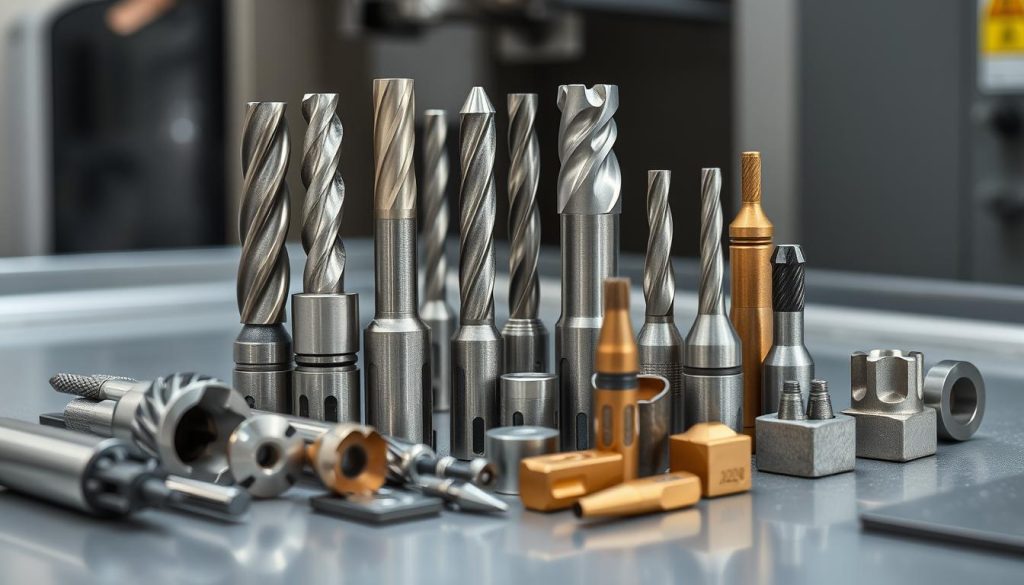
Factors to Consider When Choosing Turning Tools
When picking CNC turning tools, several key factors come into play. Material compatibility between the workpiece and tool is crucial. The material’s properties greatly affect the tool’s performance and life.
Tool geometry and coating are also vital. The tool’s shape and surface treatment impact its life, cutting speed, and feed rate. Matching the tool to the material and machining needs is essential for quality parts.
Material Compatibility
The workpiece’s hardness, abrasiveness, and thermal properties must match the tool’s. For hard, abrasive materials, tools with strong carbide and special coatings are needed. This helps them handle the stresses and heat of turning.
Tool Geometry and Coating
The tool’s geometry, like rake and clearance angles, affects cutting speed, feed rate, and life. The coating, such as TiN or TiAlN, boosts wear, heat, and chemical resistance. This improves performance and tool life.
| Workpiece Material | Recommended Tool Geometry | Preferred Coating |
|---|---|---|
| Aluminum Alloy | Positive rake angle, sharp cutting edge | Titanium Nitride (TiN) |
| Stainless Steel | Negative rake angle, robust cutting edge | Titanium Aluminum Nitride (TiAlN) |
| Titanium Alloy | Specialized cutting edge design, high positive rake angle | Ceramic or Diamond-Like Carbon (DLC) |
By focusing on material compatibility and tool geometry and coating, manufacturers can boost CNC turning performance. This leads to better quality parts, longer tool life, and higher productivity.
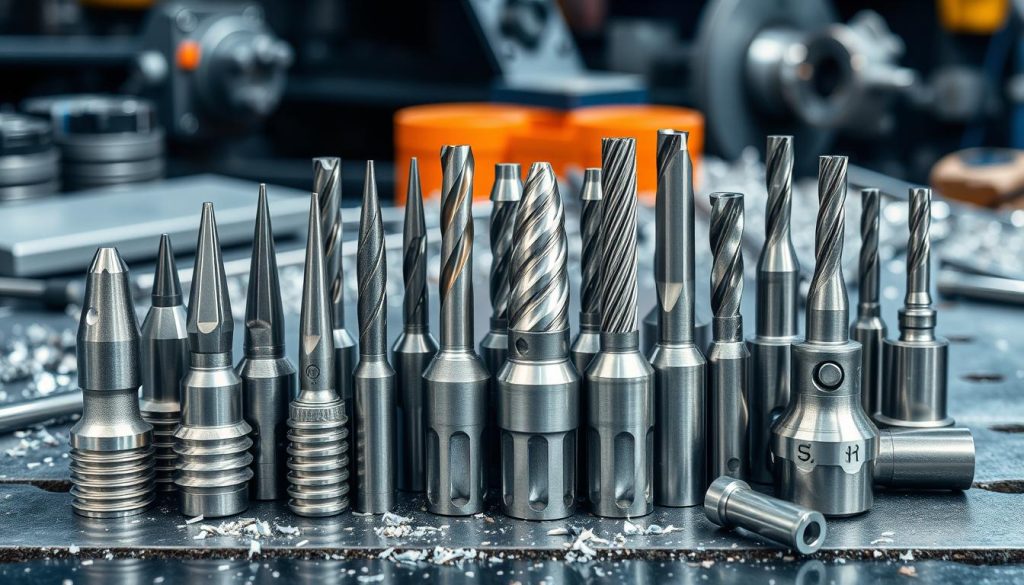
Applications of CNC Turning Tools
CNC turning tools are very useful in many industries. They are key in aerospace, automotive, general manufacturing, and more. Their precision and skill in making complex shapes are vital for creating top-notch parts with great finishes.
Precision Machining for Aerospace and Automotive
In aerospace and automotive, CNC tools stand out. They are crucial for making precise parts like engine components and turbine blades. Their skill in creating complex shapes and keeping dimensions tight is essential for these parts’ reliability and performance.
General Manufacturing and Industrial Use
CNC tools are also vital in general manufacturing and industrial settings. They help make custom parts for machines and high-quality consumer items. Their ability to consistently produce parts with excellent finishes makes them essential in many manufacturing processes. They help create a wide range of products that are crucial for our daily lives.
